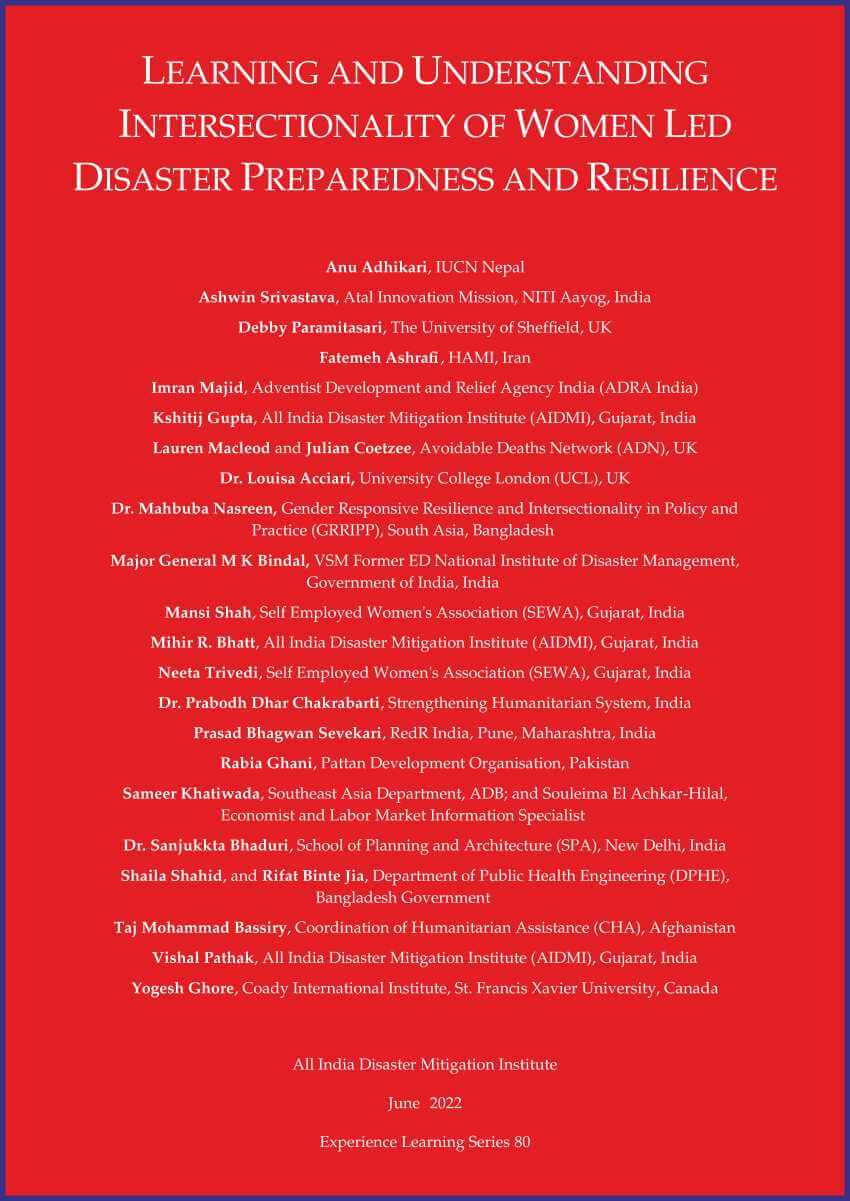 Back to Co-creating Knowledge
Back to Co-creating Knowledge
This document focuses on the important aspect of women-led disaster risk reduction (DRR). Exposure to disaster risk is often dictated by social constructs such as gender, class, race, sexual orientation, etc. The overlap and interconnectedness of these constructs is known as ‘intersectionality’.
It has been observed that men and women have differentiated vulnerability to disasters. This differentiated vulnerability needs to be articulated and understood so that appropriate risk reduction policies can be implemented. This issue tries to highlight not only women’s differentiated vulnerability but also the fact that women’s leadership in reducing risk against extreme events has been hitherto neglected. By discussing, the intersectionality of risk, resilience and gender a meaningful dialogue with concrete action can be started in this direction.